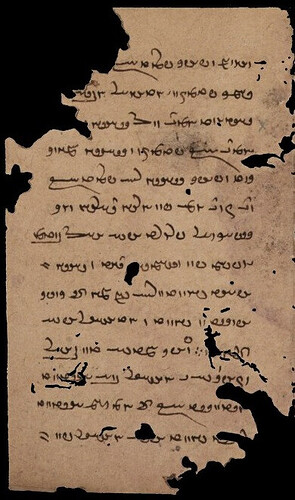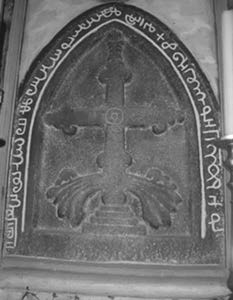I've wanted to make a conlang with an abjad for a while, just to experiment with them. I think I'd do an imperfect abjad, but I'm not sure of any interesting/creative way to do that sort of thing. Do y'all have any interesting abjads from conlangs or natlangs?
Book Pahlavi is a neat writing system. It's a Semitic abjad ultimately descended from Aramaic, and used to write Persian in the post-classical period. It's since been displaced by the Arabic script, and nowadays it is only used by Zoroastrian magi for ceremonial purposes.
What makes it interesting is that it has only 13 distinct characters, with each character representing several possible sounds. For example, the letter waw-nun-ayin-resh could represent /w/, /n/, /oː/, /uː/, or /r/. These letters also formed ligatures, some of them ambiguous with unrelated letters. Users of Book Pahlavi also frequently directly transcribed words from unrelated neighboring languages and then pronounced them as the equivalent word in Persian (e.g. the word for "dog" would be written «KLB’» [from Arabic kalbā] but pronounced "sag"), essentially making a lot of words logograms in an ostensible abjad.
oh wow that is so much cooler than i expected to find tbh. idk why but my expectation for naturalism tend to be really conceptually tame. this is pretty cool
My favourite abjad is Pitman Shorthand.
Consonants are written as strokes (little lines or curves), with little things that can be attached to them, hooks and loops and stuff, to represent consonants that are commonly used in clusters (like /s/, /l/, /r/).
Vowels are represented by optional diacritics, but not just that. The vowels of the language (originally English) are split into three categories roughly based on height, and the whole outline of a word is written above, on or crossing the line you write on, to indicate which class the first vowel in it belongs to. Low (open) vowels have the outline written above high above the line, and high (close) vowels have it written lower down and crossing it.
imo the thing that leads to a writing system having interesting quirks and structures is time leaving historical spellings and spelling reforms spreading historical spellings into regular spelling patterns (like a split digraph in english) or imperfective adaptations of a script into a language whos phonology doesn't perfectly work for the script its adapting (like giving a language with alot of distinct vowels and fairly restricted phonotatics an abjad

